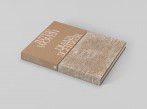

#1
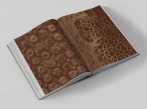

#2


#3
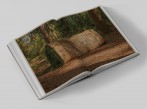

#4
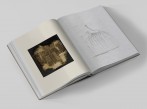

#5
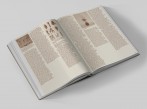

#6
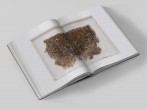

#7


#8
Interwoven – Exercises in Rootsystem Domestication
Awarded with Best Dutch Book Designs 2023
ADC Awards 2024 Gold winner
For the past eight years, Scherer has focused on developing the interdisciplinary project Interwoven. This publication will discuss research, new craft and its relevance to biotechnology in addition to the artworks. Contemplative essays will play a central role in the conceptual design. Authors are Giovanni Aloi, Judith Elisabeth Weiss, Phillip Fimmano, Colin Huizing, Jiwei Zhou TU Delft and Norbert Peeters. In their essays, the five authors from the disciplines of art, design and botany reflect on the different facets of the project. In 2015, Scherer began developing the technique Interwoven from idea to material, grown dress – sculptures to large-scale installations.
https://www.japsambooks.nl/products/interwoven-diana-scherer
On the Cultural Performance of Destruction, Uprooting, Annihilation
Diana Scherer sets in motion a kind of dialectic of cultural forms and cultural behaviour in her art in the interplay of collaboration with nature and the opposing mastery over nature. She not only spreads out the lush verdant green of caring horticultural work for us to witness – but also the opposite – destroying what she tended beforehand. The carpets of grass devotedly grown by the gardener therefore hardly differ, in terms of plant physiology, from a meadow that grows naturally. Two spheres can be differentiated from one another phenomenally – one of latency and one of manifestation. The underground sphere comprises the network of roots, the sphere that is above-ground displays the abundant growth and lush verdancy. The next step of Scherer’s artistic work draws our attention to the hidden world of the roots. At the end of the growing phase follows what the artist terms ‘the harvest’, again resorting to agricultural metaphors. A radical act lies behind the harmless expression, a procedure that literally zeroes in on the roots of things – the roots are cut off and then the carpet of root systems is lifted out of the ground. The harvest of the roots presents a drastic image of the inversion of cultural history, an image that has also political implications. The domestication of plants and the associated practice of harvesting represent a key turn in the history of humankind since it began to settle the land in the neolithic revolution, literally establishing roots. In face of the impact of life depending increasingly on technology, the ruthless exploitation of the Earth as the other side of the coin of harvesting and the increase in human migration make Scherer’s artworks appear as if they were presenting the other side to the history of cultivation.
From the Essay: On Roots and Men: Interwoven Narratives in the Age of Hybrid Realities
by Judith Elisabeth Weiss and Herbert Kopp Oberste Brink
Contributing Author:
Giovanni Aloi, Chicago
Colin Huizing
Philip Fimanno Paris, New York
Judith Elisabeth Weiss & Herbert Kopp Oberste Brink, Berlin
Jiwei Zhou, Delft
Norbert Peters, Leiden
Publisher: Jap Sam Books 2023. https://www.japsambooks.nl
Design: Mainstudio https://mainstudio.com


#1


#2


#3
Nurture Studies, 35 images Van Zoetendaal Publishers.
With Nurture Studies, Scherer presents an archive of flowers she has grown from seed over a six-month period. Rather than letting the flowers grow in open soil, she has forced each plant to develop within the confines of a vase. Only at the end of the process does she remove the plant’s corset, exposing roots that retain their shape as an evocation of the now absent vase.
The floral portraits form a pendant to earlier photo series in which Scherer opted for much rawer imagery, things like young girls lying on the ground with their backs to the camera, collapsed like rag dolls, so that viewers almost automatically think of them as victims (Mädchen, 2002-2007). In Nurture Studies this confrontational imagery has made way for subtlety. Although the flowers, with their exposed roots, look just as fragile as the girls, Scherer avoids any semblance of drama, mainly by the objectivity of her photographic style, arranging the plants upright in the frame and photographing them with a technical camera. This approach is consistent with the orderly way collectors catalogue their objects.
Behind this objective methodology, there is a great deal of emotion at work. More than anything else, Scherer’s process of collecting, nurturing and documenting is a display of tenderness, ritualistic love that remains hidden to the viewer, but still infuses the vulnerable final images with its almost tangible presence.
